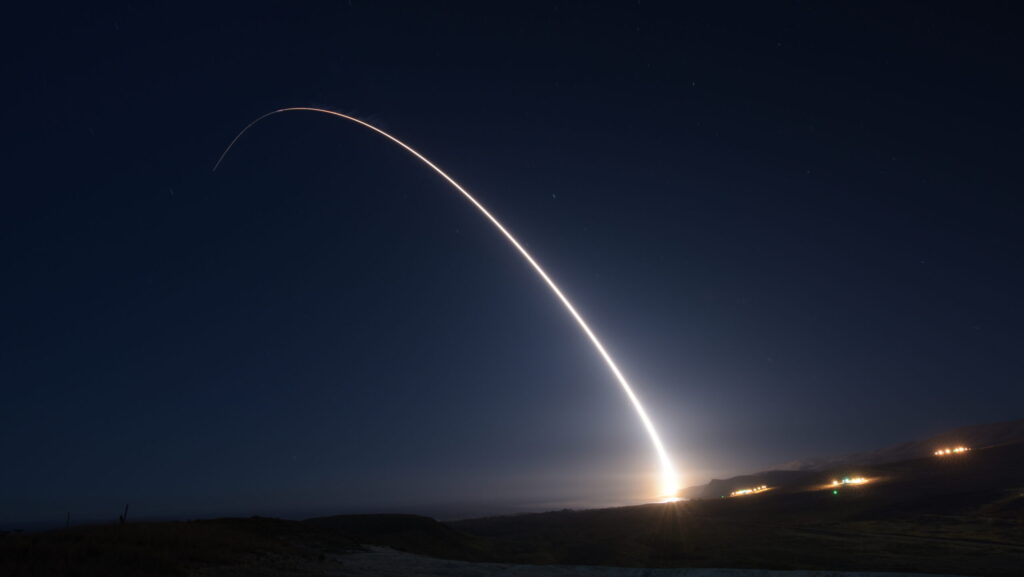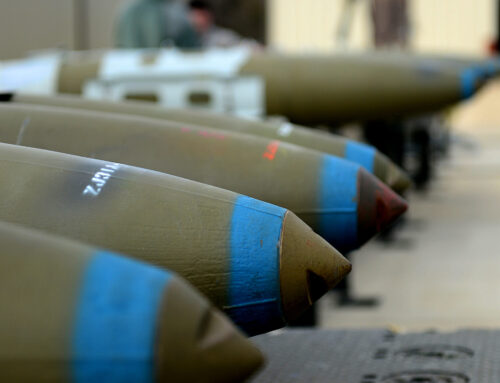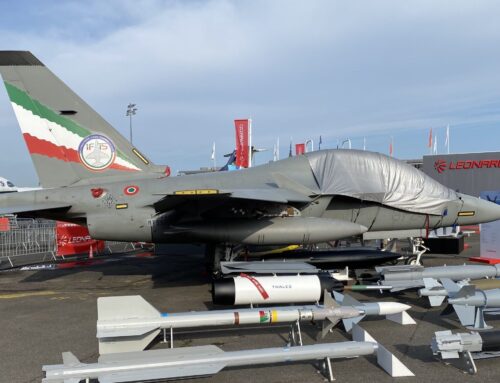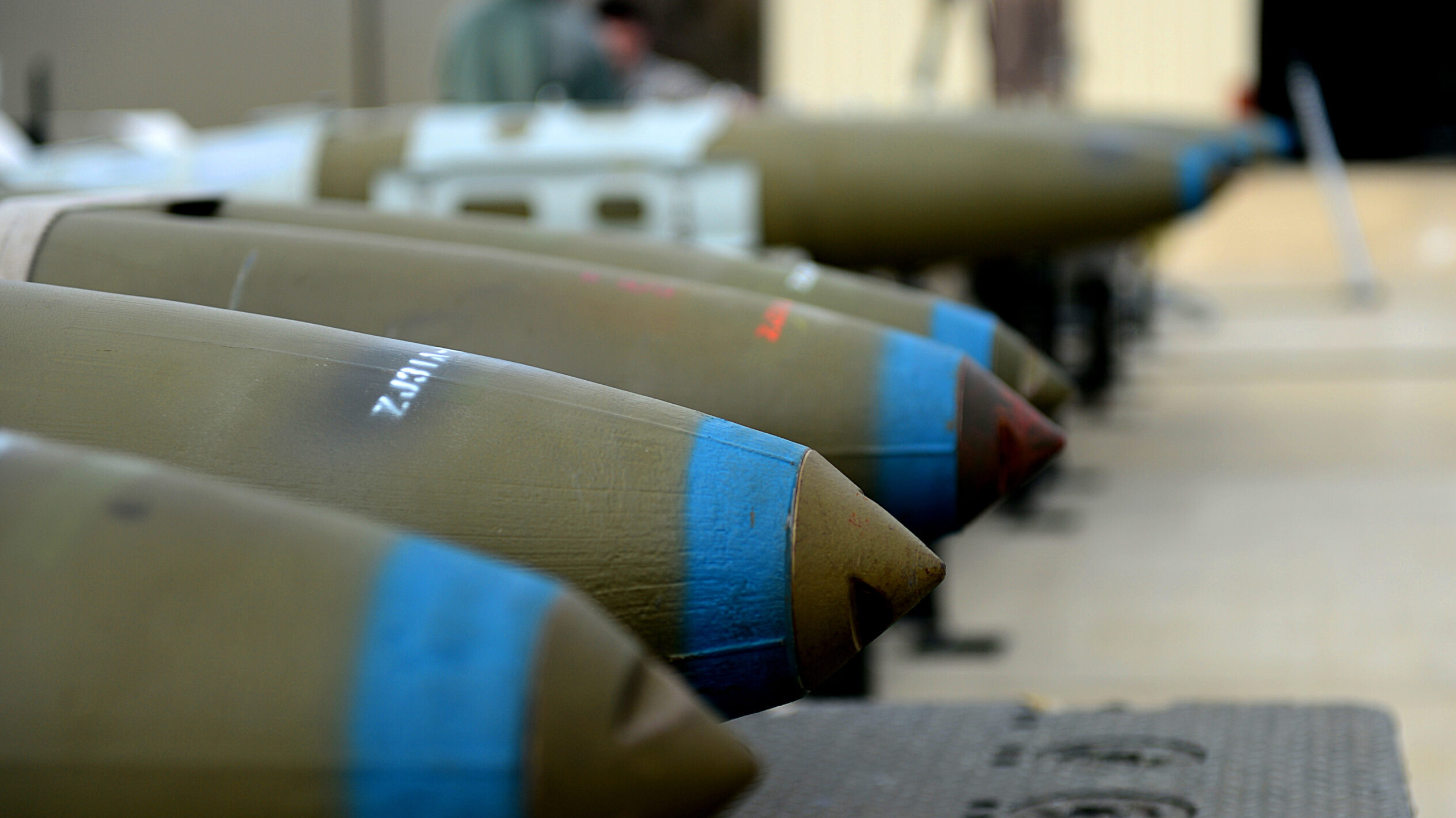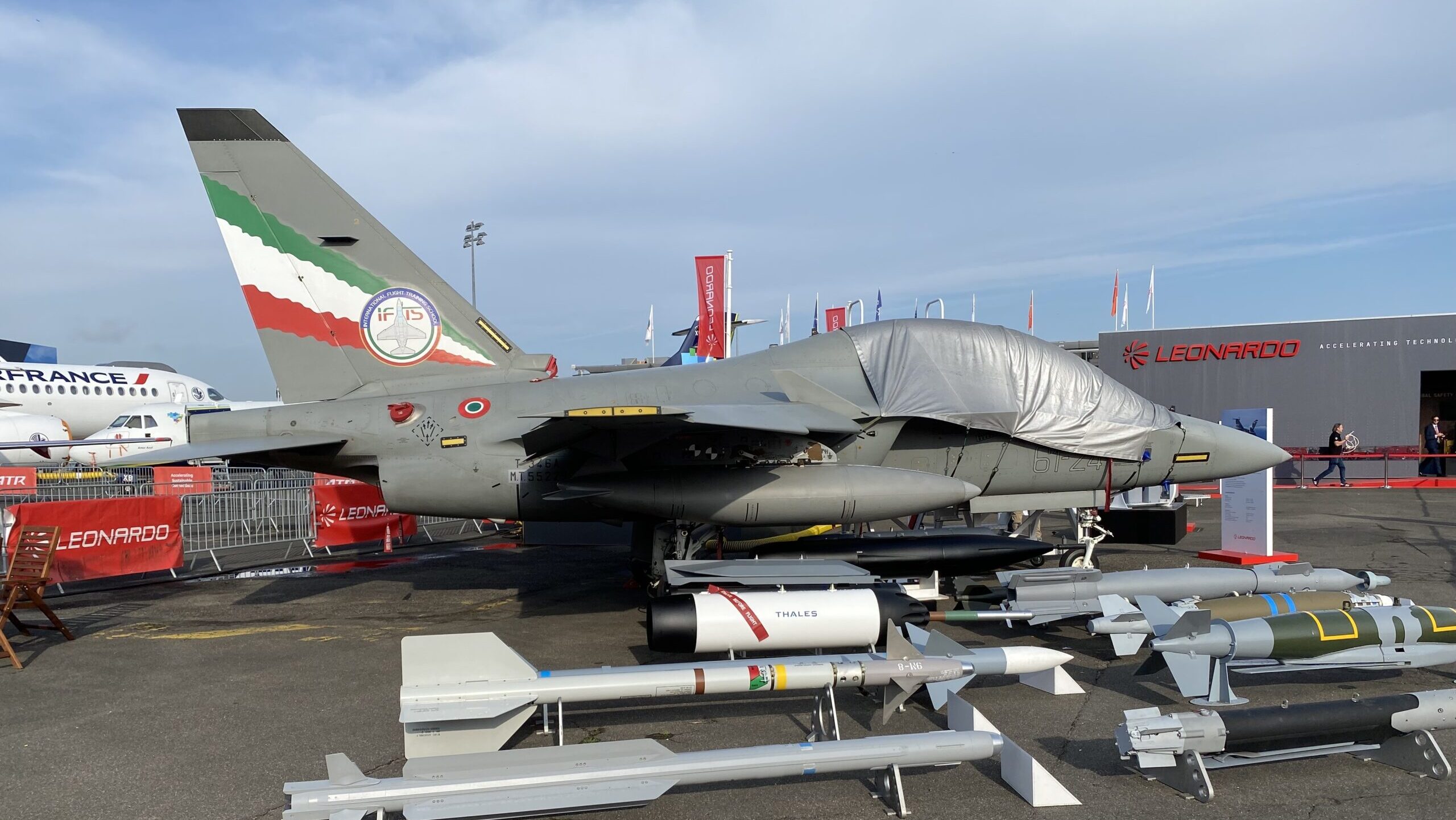An Air Force Global Strike Command unarmed Minuteman III intercontinental ballistic missile launches during an operational test at 12:27 a.m. Pacific Time, Thursday, Oct. 29, 2020, at Vandenberg Air Force Base, California. ICBM test launches demonstrate the U.S. nuclear enterprise is safe, secure, effective and ready to defend the United States and its allies. ICBMs provide the U.S. and its allies the necessary deterrent capability to maintain freedom to operate and navigate globally in accordance with international laws and norms. (U.S. Air Force photo by Michael Peterson)
WASHINGTON — A congressionally mandated review of the Air Force’s Minuteman III nuclear ICBM replacement found that its pricetag has exploded by 81 percent, resulting in an updated estimate of roughly $141 billion, the Pentagon announced today.
Despite that cost growth, the Pentagon’s top weapons buyer, Bill LaPlante, has certified the LGM-35A Sentinel program to continue, in part because “no alternatives” were equally viable and less costly. But in the meantime, LaPlante has rescinded the program’s Milestone B decision and tasked the Air Force to restructure the troubled acquisition, which he said will likely see a delay of “several years” under a new timetable.
“It is important to note that this certification does not indicate business as usual,” LaPlante said today in a briefing with reporters ahead of the Pentagon’s announcement. “The program will be restructured to address the root causes of the breach and ensure an appropriate management structure is in place to control costs.”
In a statement, Sentinel prime contactor Northrop Grumman said, “DoD’s certification and funding validates continued confidence in the Sentinel weapon system and its critical role in safeguarding global security. In partnership with the Air Force, Northrop Grumman is making important progress on this highly complex weapon system.”
“We are achieving key milestones to mature the design and reduce risk in preparation for future production and deployment. These milestone achievements include design and development activities for the facilities and support equipment as well as the missile, such as the successful static test fires for all three stages of the booster and tests of other crucial elements. We continue to perform and meet our commitments under the EMD contract as we move toward delivery of this essential national security capability,” the company added.
As the land leg of the nation’s nuclear triad, officials have emphasized fielding the new missile is imperative to maintain America’s strategic deterrence while adversaries like China rapidly modernize and expand their nuclear arsenals.
RELATED: Sentinel ICBM’s first flight test slips to 2026: Air Force
An earlier examination by the Air Force in January found that the Sentinel program’s costs had ballooned by 37 percent, a “critical” cost breach that under statute triggered a high-level Pentagon review. Known as Nunn-McCurdy, that process concluded today with LaPlante’s decision to certify the program instead of canceling it. Bloomberg previously reported the program’s new cost growth estimate.
Officials today reiterated previous observations about the program’s swelling cost, explaining that unwelcome discoveries in the missile’s command and launch segment — essentially the ground infrastructure like new silos, modern cabling and easements the Pentagon will need to negotiate with landowners — are driving the cost growth. The Air Force originally planned to recapitalize a total of 450 launch facilities and acquire 659 missiles, 400 of which would be deployed to launch facilities, and declare initial operational capability around June 2029.
“The knowledge of the ground-based segment of this program was insufficient in hindsight to have a high-quality cost estimate,” LaPlante said. Air Force acquisition czar Andrew Hunter separately explained that “the reason why we now know about this projected cost growth is because we’ve dramatically accelerated the maturity of the design of the ground segment.”
The $141 billion dollar estimate is somewhat notional, as officials are still exploring how the program will be restructured while the Air Force establishes a new program baseline that will come with an updated Milestone B plan. LaPlante said the program has been certified with a modified strategy that includes changes to launch facilities, which should make them “more cost-effective as well as less complex.” Reducing complexity could also help speed up the transition from the Minuteman III to the Sentinel, he suggested.
“Those numbers may vary slightly from the numbers that we’re discussing today, but that will be the new program baseline,” Hunter said of the estimates released by DoD today, adding that “we expect that process [for a new baseline] to take on the order of 18 to 24 months to complete.”
Soaring costs for Sentinel have placed the Air Force in a tough spot as the service faces numerous modernization priorities, such as the B-21 Raider and Next Generation Air Dominance fighter. Still, Air Force Vice of Staff Gen. Jim Slife said today that cost increases likely won’t materialize until years into the future, beyond the five-year spending horizon known as the Future Years Defense Program.
“Really it is a decision for down the road to decide what tradeoffs we’re going to need to make … but those decisions won’t be made until we get to the new Milestone B decision,” Slife said.
Congress has largely been supportive of Sentinel despite its cost troubles, though progressive lawmakers like California Rep. John Garamendi have challenged the DoD to thoroughly explore alternatives — which the Nunn-McCurdy statute requires — like extending the lifespan of the current Minuteman III ICBM fleet.
LaPlante said today the Pentagon explored “four to five” different options that would present “equal or better performance at less cost,” including options with mobile ICBMs, though none met the criteria.
“In every case, either some combination of the following made it less desirable than the modification that was recommended. And it was some version of, either the cost was prohibitive and/or it didn’t meet the operational requirements that the warfighter had levied on us, leading us to the determination of the mod one, modification to Sentinel,” he said.


